New England Fireplace Decor Ideas
Having a fireplace not only adds value to your home, but it also serves a focal point in whichever room it is located. That is why having beautiful fireplace decor year-round is a must! Baskets are a great way to decorate your fireplace when it’s not in use, and today we’ll show you different basket and decor combination ideas.
Is your Boston area fireplace safe and clean? It is important to make sure that your fireplace has been swept and inspected in the past year before decorating and any combustible decor should be at safe distances from the fireplace opening . Click here or call (781) 893-6611 to get in touch with us about your chimney needs.
Now, we’ll share some beautiful fireplace decor ideas!
New England Fireplace Basket and Decor Ideas
Putting a wicker basket near your fireplace is a must! It can be the finishing touch in tying together the overall look of your fireplace. Luckily, there is a wide variety of basket styles that go with just about any look that you are going for. Here are a few themes that New England homeowners love.
Nautical Fireplace Decor with a White and Tan Basket
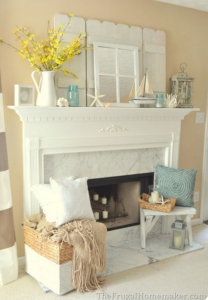
Going with a nautical theme is a natural choice for many New England homeowners given Massachusetts’ proximity to the ocean. There are endless decor ideas when it comes to the ocean. You’ll see in the photo above that The Frugal Homemaker combined lanterns, star fish and other decor items with a white, tan, and teal color palette when decorating her fireplace. She tied the look together by filling a rectangular white and tan wicker basket with a sand colored throw blanket and white throw pillows, evoking the colors of the beach.
Farmhouse Fireplace Decor with Striped Oval Baskets
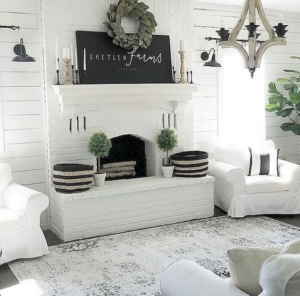
Whether or not your home is in the country, farmhouse style decor is in. The simple beauty of this decor works year-round, making it so that you do not need to redecorate with each season. A simple shift of the decor when in use will allow you to go from stylish to safeguarded with ease. This fireplace, featured on 33decor.com, combines simple greenery with two oval colored, striped baskets for a calming, symmetrical theme. The baskets pick up the black in the candlestick holders and blackboard styled farm sign, while adding a pop of darkness to the light colored room.
Classic Fireplace Decor with a Textured Woven Basket

If your New England home is historic or classical style, you can mix and match interesting pieces of art on the mantle. This intricate fireplace featured on Good Housekeeping combines framed prints, a sculpture, a decorative box and interesting lighting fixtures on the mantle with a thickly woven basket filled with wood beside it.
Care for Your Boston Area Fireplace and Chimney
 Fireplace basket decor transforms the look of your fireplace from boring to beautiful. Whether your home has a nautical, farmhouse, or classic flair, there are countless amazing ideas to draw from. Remember to always focus on fireplace safety when decorating to make sure that your creativity does not compromise the safety of your home.
Fireplace basket decor transforms the look of your fireplace from boring to beautiful. Whether your home has a nautical, farmhouse, or classic flair, there are countless amazing ideas to draw from. Remember to always focus on fireplace safety when decorating to make sure that your creativity does not compromise the safety of your home.
Boston’s Best Chimney has been serving the Boston area since 1989. We have earned a reputation as a trustworthy, full-service chimney company and we are here to serve you. If you need a chimney inspection, sweep, or installation, we are here for you! Click here or call (781) 893-6611 to contact us.
The post New England Fireplace Decor Ideas appeared first on Boston's Best Chimney.

 Creosote buildup
Creosote buildup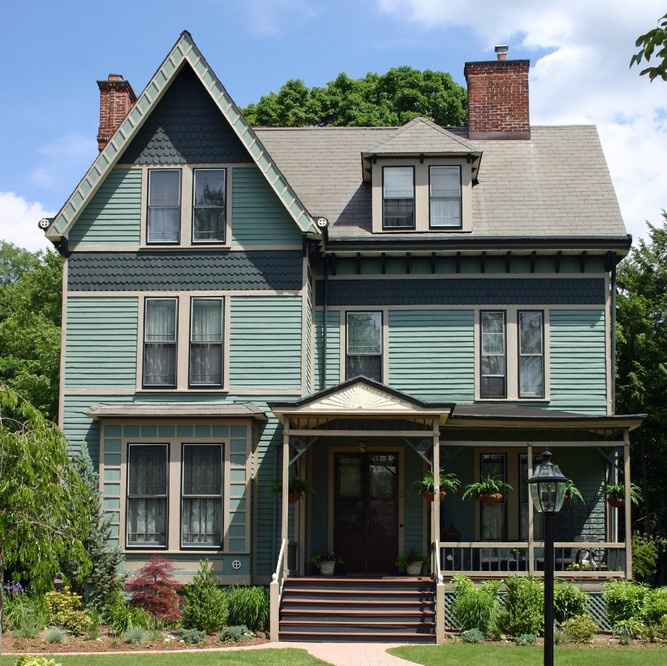 A chimney that receives regular maintenance should give many years of safe and efficient service. But once a chimney passes into “old age,” i.e., 50 or 75 or more years old, certain problems should be expected. Still, with proper repairs and maybe some alterations,
A chimney that receives regular maintenance should give many years of safe and efficient service. But once a chimney passes into “old age,” i.e., 50 or 75 or more years old, certain problems should be expected. Still, with proper repairs and maybe some alterations, 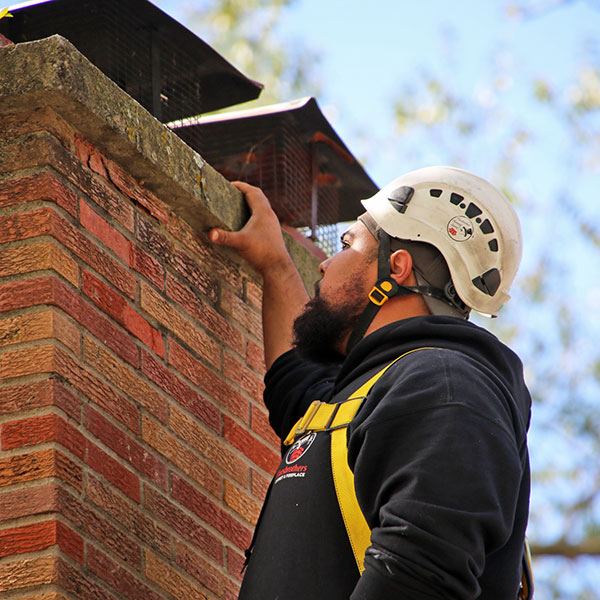 Historic chimney inspections
Historic chimney inspections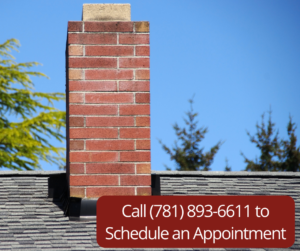
 Bricks
Bricks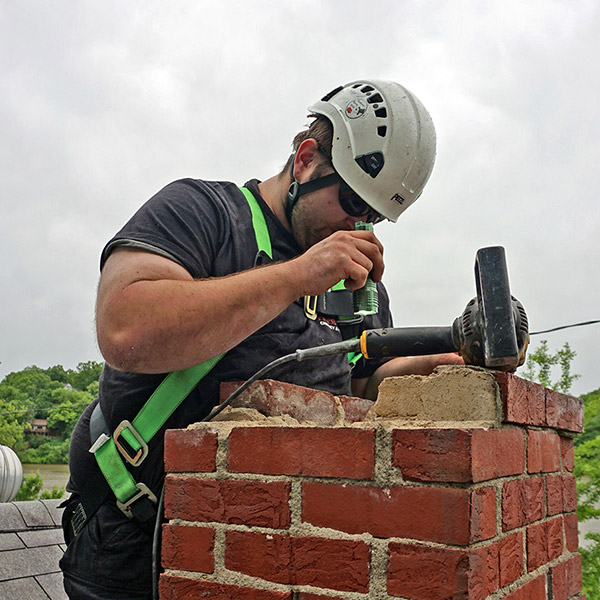 A leaky chimney can be confusing, dangerous and possibly quite expensive to fix if the problem isn’t taken care of in the early stages. When getting estimates to have your
A leaky chimney can be confusing, dangerous and possibly quite expensive to fix if the problem isn’t taken care of in the early stages. When getting estimates to have your  Professional chimney companies have a variety of methods they can use to address and solve chimney leaks including:
Professional chimney companies have a variety of methods they can use to address and solve chimney leaks including: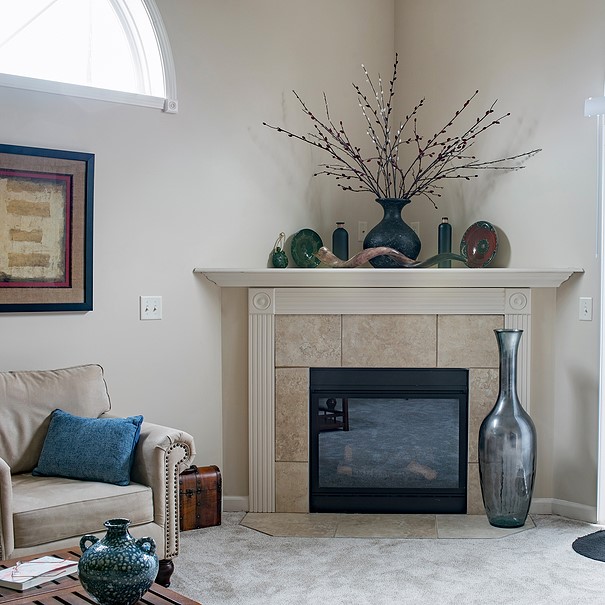 Ambiance
Ambiance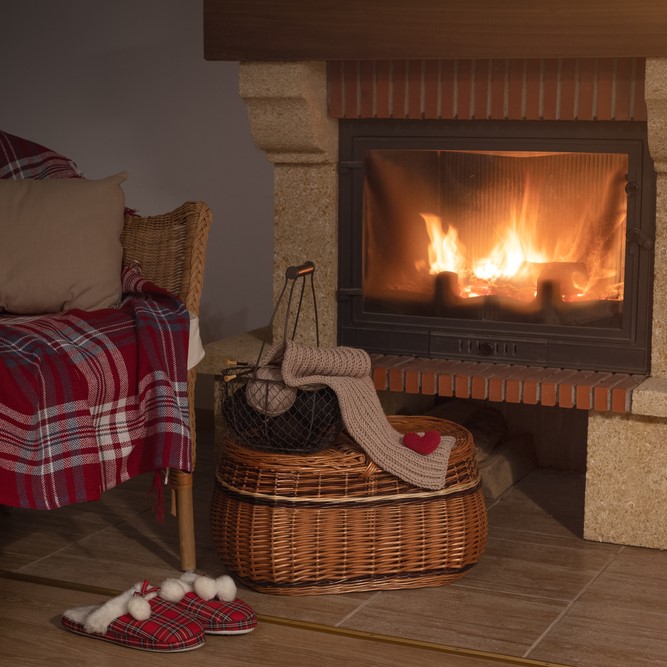 Affordability
Affordability